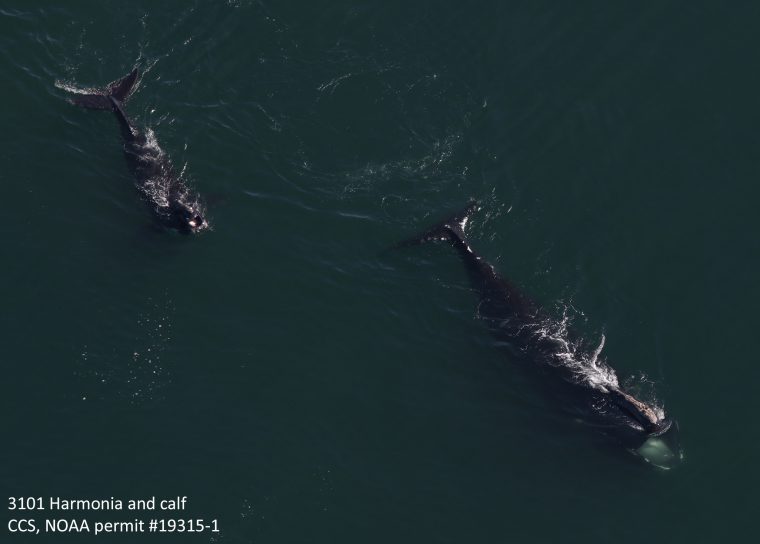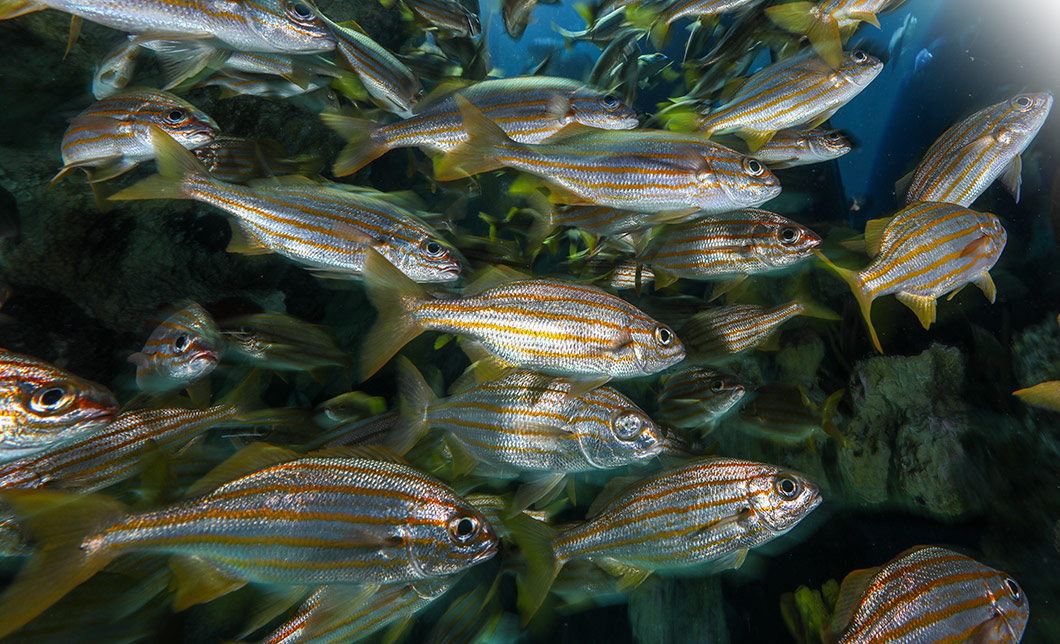Limited boat, aerial surveys during pandemic will affect scientific research and tracking

BOSTON, MASS. (May 13, 2020) – As North Atlantic right whales, including mothers and calves, make their way north toward Canada, scientists who are usually tracking and photographing the whales at this time of year are eager to get back on the water and in the air.
The ongoing COVID-19 pandemic means research scientists at the New England Aquarium have been unable to study the highly endangered species in the field, instead relegated to processing previously collected data on their computers.
“There are so many ways that this pandemic is impacting our lives. For one, it’s hampering our ability to collect the new data we need to track the whales. The longer field work is restricted, the more data are lost, and those data can never be recovered,” said Philip Hamilton, a research scientist at the Aquarium’s Anderson Cabot Center for Ocean Life. He manages the Aquarium’s North Atlantic Right Whale Catalog, which has carefully documented more than 750 whales with more than one million photographs since 1935. About 400 of the endangered North Atlantic right whales are thought to be alive today.
With 10 known calves traveling north with their mothers, Hamilton said the stay-at-home restrictions mean they cannot photograph the calves as closely or take genetic samples from the whales. It is difficult to identify calves without photographs of them during the spring and summer, he said, and it could be a few years until they can take a skin sample to identify and track the calf.
But even as life on land has slowed due to COVID-19, scientists are encouraged by the movement of the right whales, especially the recent sightings of three seasoned mothers and their young calves—Calvin, Palmetto, and Harmonia—all well-known to the Aquarium team. “It is always reassuring to know the calves made the long migration from the southeastern U.S. safely,” Hamilton said.
For Calvin, a 28-year-old female, this is her fourth known calf. She and her calf were spotted in Georgia in early February and then again off Race Point on Cape Cod in April. Orphaned early in her life at eight months old when her mother, Delilah, was struck by a ship in the Bay of Fundy, Calvin lived and returned to the bay the following summer. She is named for the character in the Calvin and Hobbes comic strip and is the inspiration for the Calvineers, a group of dedicated students in Maine who educate others about the plight of right whales.
Palmetto, a female who is at least 32 years old, is named for her callosity pattern, which resembles a palmetto tree and is traveling with her fifth calf. Palmetto is unusual in that she has birthed at least a few of her calves off South Carolina – north of the critical habitat designated to protect whales on the calving grounds off Georgia and Florida. She and her calves are rarely seen anywhere north of the Carolinas. Both Harmonia and Palmetto were seen in Cape Cod Bay with their calves in the middle of April.
Harmonia, a 19-year-old female, previously gave birth to two calves—one in 2009 and another in 2016. Her first calf barely made it past its first year before being struck by a vessel and killed during the summer of 2010. Harmonia’s second calf, Gully, is still alive but was discovered in 2018 suffering another major threat to right whales—entanglement in fishing gear, leaving severe wounds and a deep gouge in its head.
Typically, scientists use photographs of scars from entanglement, ship strikes, or other injuries every season to keep close watch on the species’ physical health. Unless surveys by boat and airplanes are able to start again soon, the gap in sighting will contribute to under-reporting of whale numbers, entanglements, deaths, and scars. Currently, only the Center for Coastal Studies is flying over Cape Cod Bay to track the whales, and the Department of Fisheries and Oceans Canada is tracking activity in the Gulf of St. Lawrence area. Typically, another four to six organizations would be doing research now.
Planning for summer research expeditions for the Aquarium’s right whale scientists is still moving forward, but whether their work in the Gulf of St. Lawrence or the Bay of Fundy—located between Maine, New Brunswick, and Nova Scotia—can occur in part or in whole depends on the status of regional, national, and international restrictions in response to the pandemic.
MEDIA CONTACT:
Pam Bechtold Snyder, psnyder@neaq.org; 617-686-5068

